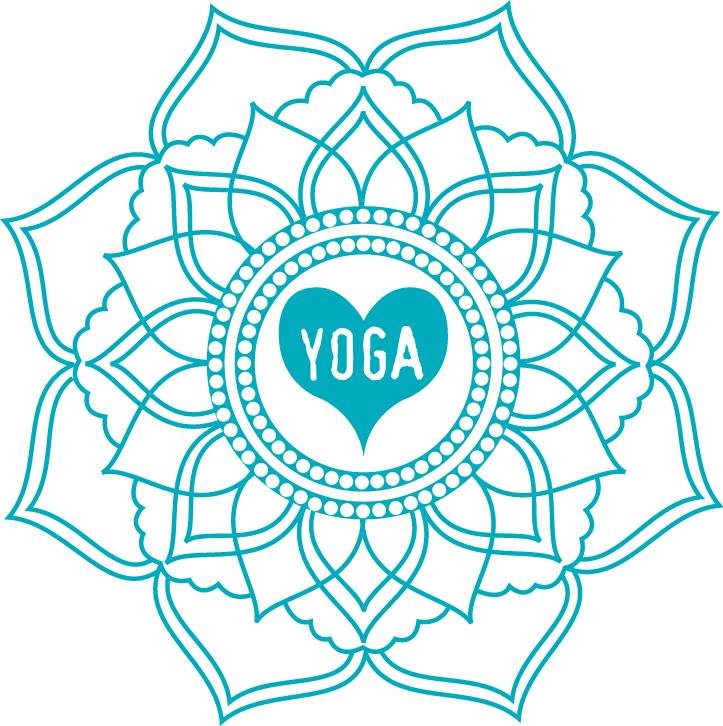Ashtanga Vinyasa Yoga | Advanced 300hr Teacher Training
Applications are open for the LoveYoga Ashtanga Vinyasa Yoga Level 2 RYT300 Teacher Training 2025

Ashtanga Vinyasa Yoga Advanced Level 2
300hr Teacher Training 2025
The LoveYoga Teacher 300hr Teacher Training was designed specifically for those who have already completed their 200hr certification – as a chance to dive deeper. Pedagogy: The Art of Teaching how to teach is something I have observed as a studio owner for over 15 years, is something that takes time to practice, patience to really know your stuff from the inside and humility to be authentic. The chance to support, to continue to grow— especially in the realm of Ashtanga Yoga – is not readily available, especially in New Zealand. Many teachers with a 200hr training I come across – from all hatha yoga lineages – don’t feel confident to teach, want to know indepth anatomy, and lack experience and tools to deal with a wide range of students. There is a common request for ´MORE´ skills to help them share classes with grace and ease.
The course will run in studio with some classes available if needed on zoom (i.e. to reduce travel and accommodate those from out of town, also helpful if you are sick or time restrictions).
This training was developed to enhance your current skill set and give you confidence to:
- Fine tune your adjustments, including Intermediate Series poses
- Refresh and revitalise your understanding and use of anatomy
- Cue classes with intelligence and fluidity
- Expand your philosophy teaching with stories of Indian Mythology
- Learn how to hold your anchor and teach deep Pranayama practices
- Add trauma informed awareness to your teaching style
- Use somatic, therapeutic and remedial skills to work with injuries
- Use Neuro Science to help support yourself and your students growth
- Understand the use of Mudras and their subtle energetic connections
- Fine-Tune your Yoga Nidra teaching skills
Sharing a teacher training is a wonderful way to really share the essence of yoga, to go so much deeper than regular classes allow. I feel blessed everyday that I am able to walk this path, and proud to have shared with others what I can.
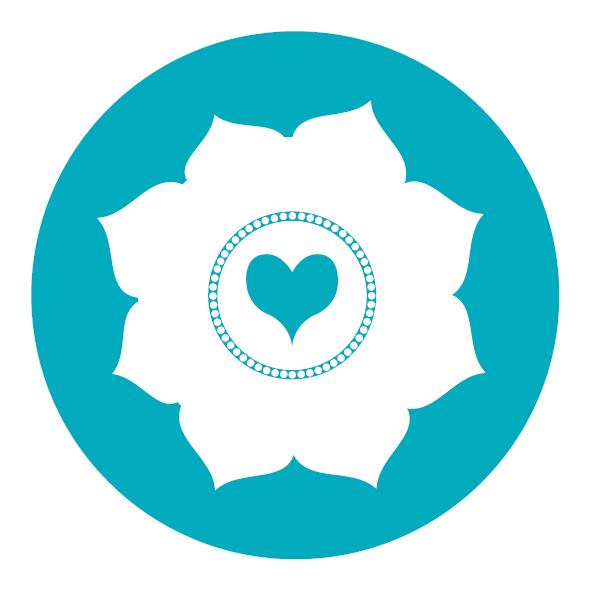






Techniques, Training and Practice
110 hours
As a teacher it is important to maintain your own practice, be it asana, breath-work, meditation or mindfulness …![]()
![]()
![]()
![]()
![]()
![]()
![]()
![]()
![]()
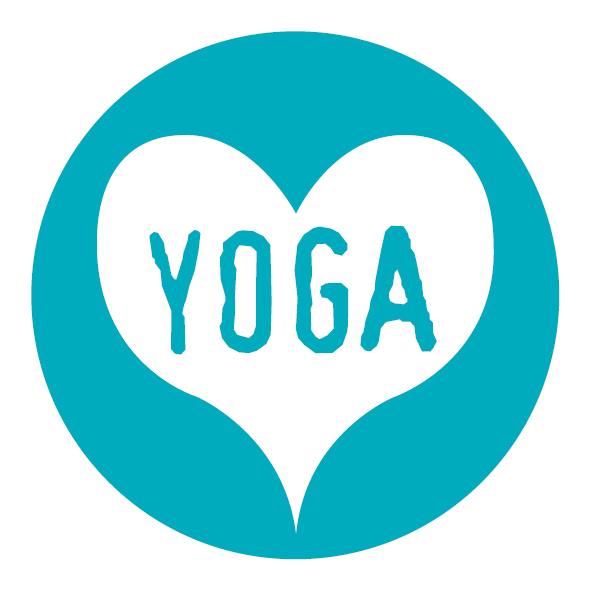


Teaching Methodology
15 hours
We will explore many different elements of Pedagogy: The Art of Teaching through the training …![]()
![]()
![]()
![]()
![]()
![]()
![]()
![]()
![]()







Anatomy and Physiology
60 hours
Undertstanding the how, what, why of the human body, from the muscles, to the systems to neuroscience is all interconnected …![]()
![]()
![]()
![]()
![]()
![]()
![]()
![]()
![]()







Philosophy, Lifestyle and Ethics
55 hours
From the Yoga Sutra to Indian Mythology, Sanskrit pose names to the elements, step deeper into …![]()
![]()
![]()
![]()
![]()
![]()
![]()
![]()
![]()







Practicum
60 hours
Teaching live classes, with real students is a wonderful way to grow, learn, challenge and build experience …![]()
![]()
![]()
![]()
![]()
![]()
![]()
![]()
![]()
Course Details
2025 Training Dates:
- Weekend 1 – March 7th – 9th: 25 hours
- Zoom – 30 x weekly 2 hour Wednesdays 5.30pm – 7.30pm from 12th March
- Weekend 2 – April 11th –13th: 25 hours
- Weekend 3 – May 16th – 18th: 25 hours
- Weekend 4 – June 13th – 15th: 25 hours
- Weekend 5 – August 8th – 10th: 25 hours
- Weekend 6 – September 5th – 7th: 25 hours
- Weekend 7 – October 3rd – 5th: 25 hours
- Weekend 8 – November 7th – 9th: 25 hours
Graduation: November 9th 2025
Price: $7500 – scroll down to view the 3 payment plans available
2025: Early Registration Discount: Save $300 if you register and pay before December 30th, 2024.
This does not include accommodation or food. Enrolment in this program is not confirmed until a $500 deposit is received.
Refund Policy For cancellation one month prior to the start date, payment will be refunded. Less than one month prior to and up to the day before training begins, 25% of the teacher training cost will be refunded. There is NO refund once training begins.
Namaste,
I’m Debi Hendra, ERYT-500, and I am the founder of LoveYoga and the director of this Yoga Teacher Training.
Sharing an indepth study into the essence of yoga is both an honour and a commitment from both teacher and student. Allowing time to pause, reflect and grow is an important aspect of this journey – which is why although the training is condensed, there is time between weekends to let the experience filter through your being, so that the body, the mind and the soul really understand and grow from the inside out.
This teacher training started many years ago in 2010 as I started to grow my first child – so the training started and has developed every year since then. It was designed to work around balance: for ALL who take part – so that it works WITH all of your other commitments, such as a family or a job.
It is a dedication to yourself, a transformational journey that will support you to be the best version of yourself. Enable you to design a future that you are proud of. All of our teachers who have qualified through this teacher training are incredible, inspiring and have gone on to pass this knowledge and wisdom with family, friends and some have even taken the leap beyond into the unknown.
This training is from my heart to yours. I hope you join me for the ride.








Payment Plans
We’re happy to accept a single payment, monthly Direct Debit payments, and also weekly Direct Debit payments for your teacher training programme at LoveYoga.







Single Payment
$7500
Early Registration Discount: Save $300 if you register and pay before December 31st, 2024.![]()
![]()
![]()
![]()
![]()
![]()
![]()
![]()
![]()



Monthly Payment Plan
$500 deposit, plus 7 x monthly payments of $1000: 1st March, 1st April, 1st May, 1st June, 1st July, 1st August and 1st September
Early Registration Discount: Save $300 if you register and pay before December 31st, 2024.![]()
![]()
![]()
![]()
![]()
![]()
![]()
![]()
![]()







Weekly Payment Plan
$7500 – 500 (deposit)
Starting 1st Jan over 40 weeks until the beginning of October = $175/week
Early Registration Discount: Save $300 if you register and pay before December 31st, 2024.![]()
![]()
![]()
![]()
![]()
![]()
![]()
![]()
![]()
Do you need Accommodation during the Teacher Training?
If you need somewhere to stay, for an additional cost of just $2160 (includes 24 nights’ stay), you can book to stay at one of our beautiful AirBnBs, just 3 minutes drive from the LoveYogaNewZealand Yoga Studio. Both properties offer a beautiful and peaceful sanctuary that exudes lightness and ease. There two options are:
Walnut Cottage – where open plan living spills seamlessly onto a large deck, new pagola and a very special addition: the spa, the perfect place to unwind and take a breath. With 3 bedrooms, 2 inside & 1 in a separate room outside, this offers shared space to prepare and eat food, and connect with other students on the course. You will have you own room, but share the bathroom.
Yogi Cottage – once a yoga studio, and now a boutique living space, renovated and refurnished to a high standard, ensuring a relaxed and enjoyable experience for your stay in Taupo. Fully self contained, with a brand new super comfy bed, it is a private haven to relax. You will have access to the entire studio living including a private bathroom.
Meals are NOT included, however you will have access to kitchen facilities in order to store, prepare and cook meals as you like. If you have any questions, or would like more details, please feel free to ask, we are happy to answer!!
Settled in a quiet neighbourhood, and Taupo town centre just 3 minutes drive away -you can enjoy the peace, but also access shops, cafes and restaurants.


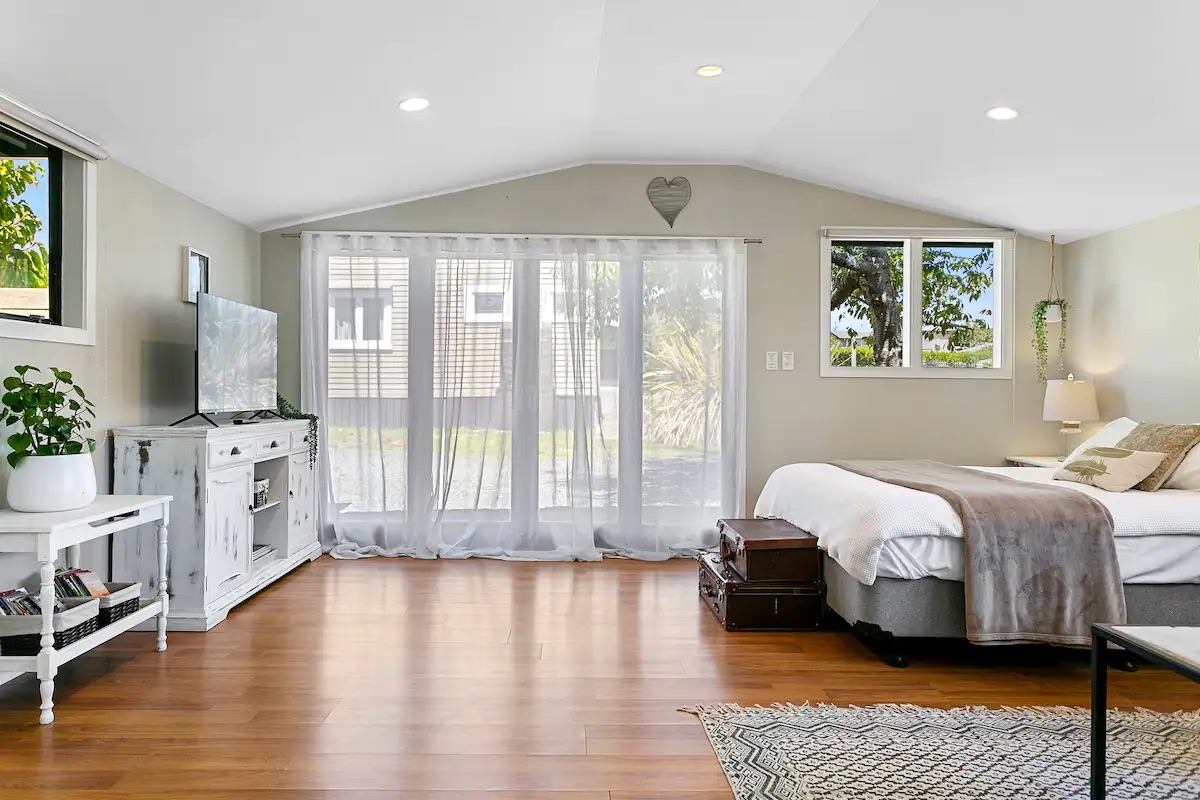

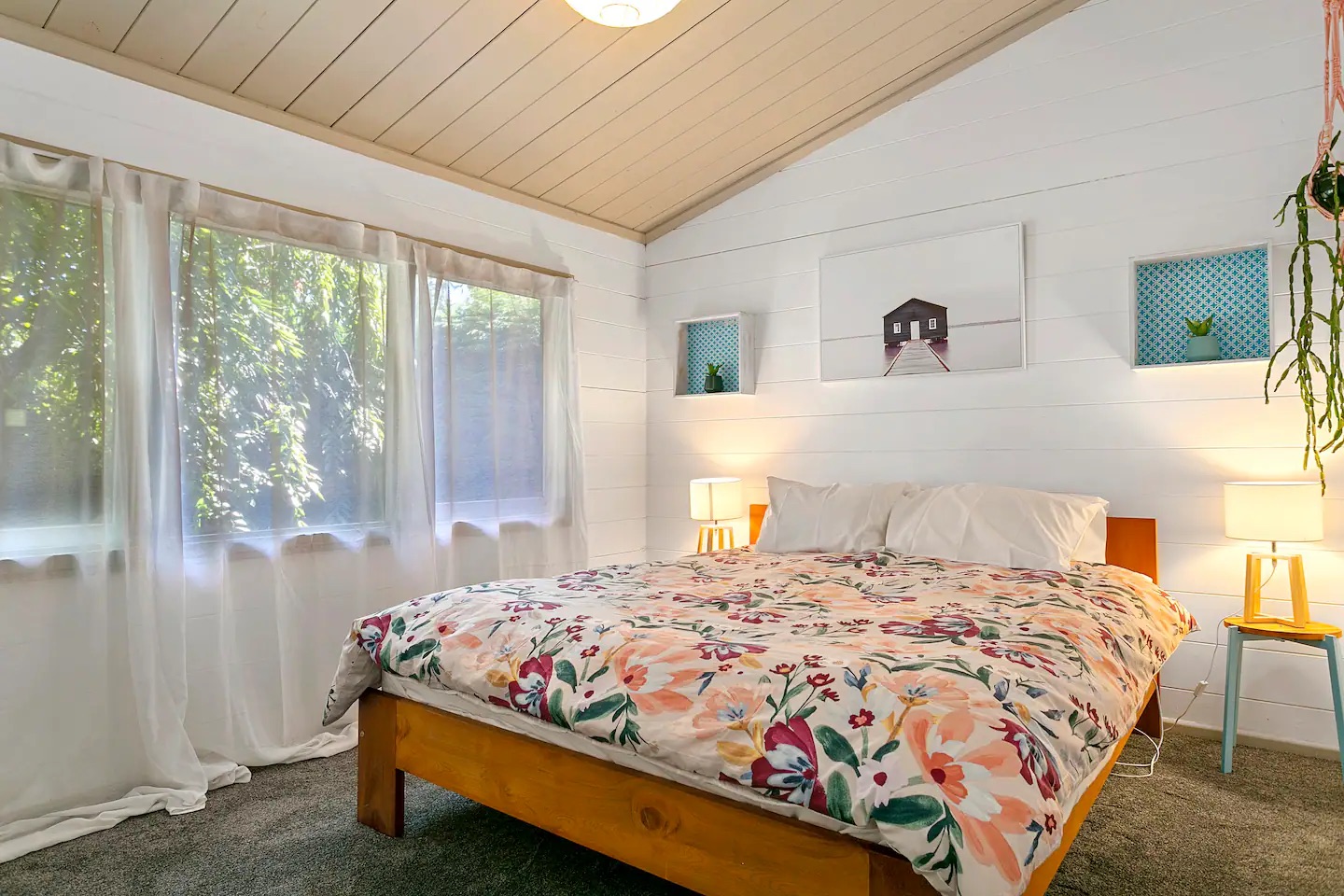

Frequently Asked Questions
FAQ’s
Am I ready to be a Yoga Teacher?
Embarking upon the path of becoming a Yoga Teacher entails a journey that extends beyond the aspiration to instruct others; it is, in essence, a profound voyage of self-discovery and personal growth. The skills you will gain are highly transferable and supportive in many aspects of life, from learning how to manage your own energy levels, to listening and tuning in to what is really going on. Many students feel that they are not worthy to start on this deep inner journey, they simply don’t know how. This is actually an incredibly powerful place to begin: simply taking one step at a time, together – and enjoying the process of nurturing yourself and growing as you do. You will be supported throughout this transformative process, which paves the way for the essential inner work that is necessary. Along this path, you will find yourself embraced by a kind, accepting and like-minded community, a collective who are bound by a shared passion for yoga (particularly Ashtanga) and a commitment to mutual growth. Rest assured, you are more than prepared to embark on this journey, and the collective strength of this community will be your guide, offering kind words, feedback, and unwavering encouragement. We look forward to sharing your journey with you!
How is this training different from other Yoga Teacher Trainings?
- Ashtanga Vinyasa Yoga is a powerful and transformative form of Yoga
- The Ashtanga framework provides a fantastic foundation for many other systems
- 3 x Weekends and 8 Day Intensive
- Extended payment plans available
- Be part of a kind, caring and loving community
- We’re DIVERSE and welcome everyone
What style of Yoga do you teach?
Our practice is anchored in the Ashtanga Vinyasa Yoga system, starting with the Primary Series. This particular framework serves as an invaluable compass for our journey, offering a solid foundation from which we can embark on an exploration of diverse yoga styles. We reflect and explore a rich tapestry of other yoga traditions to help create an anchor, this means exploring the fluidity of Vinyasa to the dynamism of Power Yoga, the poise of Hatha, and the introspective tranquility of Yin. Amidst this exploration, we also recognize the significance of equilibrium and restoration, acknowledging the complementary role of practices such as Restorative Yoga in sustaining the integrity of the Ashtanga system. In essence, our yoga journey is a harmonious fusion of tradition and evolution, guided by the wisdom of Ashtanga, while embracing the broader spectrum of yoga modalities.
How do I enroll and confirm my spot on the course?
Complete the form below, and either make a bank transfer or a credit card payment of your deposit.
Do you offer payment plans?
Yes we offer 3 types of payment:
PAYMENT IN FULL
$5500
Early Registration Discount: Save $300 if you register and pay before December 30th, 2023.
MONTHLY PAYMENT PLAN
$500 deposit, plus 5 x monthly payments of $1000 :1st Feb, 1st Mar, 1st Apr, 1st May and 1st June
WEEKLY PAYMENT PLAN
$500 deposit, plus 25 weekly payments from 1st January 2024 until the end of the training 21st July of $190 / week
How big are the classes?
Numbers are kept low – maximum 6 per training – to allow each training to be a very personal experience and maximise individual learning. It is a commitment from both teacher and student to take part in a training – it is also an opportunity to make lifelong connections with others as you learn, grow and complete the journey.
What is included in the cost?
The cost covers the comprehensive curriculum with expert guidance essential to your transformative journey. You will have access to the yoga studio – for reference materials, for observation of classes and of course as part of our community. You will also receive access to our full online platform of classes. Plus you will receive a 10 class pass to any classes on our regular schedule. Are aim is to equip you with the essential resources and tools to enrich your learning experience and foster your growth as a dedicated practitioner and aspiring yoga teacher.
Is the course registered to any Yoga Associations?
Absolutely, once completed the training is fully registered as a 200RYT with Yoga Alliance. Once you receive certification, you just need to go through the process on the Yoga Alliance website, pay the fee and you will be a fully registered yoga teacher, recognised around the world.
What is the required course attendance? What happens if I need to miss a session?
A 90% attendance is required for all classes. We understand that sometimes the universe has other plans. We request students let us know ASAP, so we organise catch-up sessions in your own time (this will usually be with a recording of the session). All missed sessions have to be made up in some way for you to graduate from the course.
What assessments are involved in this Teacher Training?
Over the course of the training, trainees are required to write a number of pieces on what yoga is, to learn to draw and articulate a sun salute. Student teachers are required to learn how to use Sanskrit appropriately in class, which will be practiced and assessed throughout. Similarly, trainees will practice regularly how to observe, adjust and modify asana, for different student needs, injuries and more. They are required to demonstrate these skills with a final test that will ask them to teach with both verbal direction and physical adjustment various asanas to students with and without injuries.
Is there any ongoing support or continued education?
What qualification will I gain?
On successful completion of the 200-hour LoveYoga Ashtanga Vinyasa Teacher Training, you will be issued a Certificate of Yoga Teacher Training from LoveYoga. This is accredited by Yoga Alliance, the International Yoga Association at the 200-hour level. This means that once you complete your First Aid certification you can start teaching straight away.
Is it possible to join just part of the training?
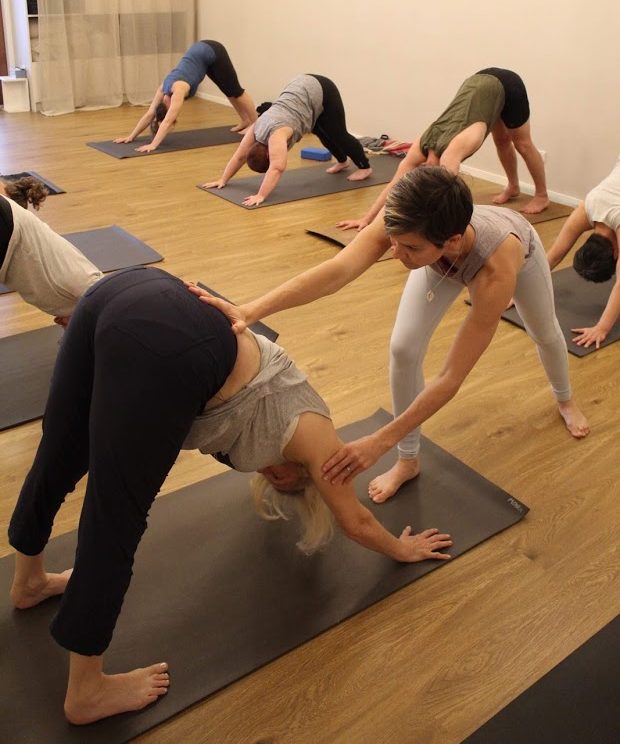

Register your interest












MODULE 1: Techniques, Training and Practice 110hours
As a teacher it is important to maintain your own practice, be it asana, breath-work, meditation or mindfulness. Student teachers are required to keep a log of their practice if they do not practice at the studio regularly. This helps to observe patterns (especially over time) and also to build accountability into the practice.
Over the course of the training, they will learn the 27 poses of the Ashtanga Yoga Intermediate Series – both as a student AND as a teacher, including modifications for injury or other reasons. This includes learning both verbal, hands-on, group and individual adjustments for each asana, how to keep a rhythm and techniques for beginners and more advanced students, as well as those with injuries.
Student teachers are required to learn how to use Sanskrit appropriately in class, bringing in both the name and number of each asana. We build on this foundation further with ideas as to what they say and how to say it. This means students teachers will learn the sequence, each asana name, how to get into each asana, where the dristhi is, and what students can do to help with their alignment in each pose.
Further they will learn how to adjust each asana and how to modify each asana for different students and different injuries. Student teachers are required to demonstrate these skills with a final test that will ask them to teach with both verbal direction and physical adjustment various asanas to students with and without injuries. They will need to display an understanding of Ujayi breathing, how to create the sound, and then teach students to synchronise this with movement.
In teaching a complete class, student teachers will come through each step of the process, including:
• Setting the scene: creating a welcoming atmosphere/calming and managing the energy of the room, for example by verbally directing students to observe their natural breathe and then lengthen it into a counted pranayama practise or setting an intention for the class
• Chanting: Leading students through the Ashtanga Vinyasa Opening chant (chant and call-back)
• 5 x Sun Salute As and 5 x Sun Salute Bs
• Student teachers will then need to display their familiarity with Primary AND Intermediate Series, teaching both separately and also teaching a half and half variation. They are required to name each asana in English and Sanskrit, know the vinyasa count through each posture and adjust students whilst they do so. They will also have to explain how they would modify certain poses if they were dealing with specific injuries.
• Finishing class and taking students into savasana – tying in an intention if one was set
• Finally students will have to complete the necessary ‘housekeeping’ to teach a class, keeping a register of all students and updating the ScheduleBliss app as necessary (using both paper and online methods).








MODULE 2: Teaching Methodology 15hours








MODULE 3: Anatomy and Physiology 60hours
Student teachers will explore the human skeleton and muscular system, running through the major bones of the body, their names and their range of motion – both assisted and unassisted. Similarly, how the Muscular System functions learning the major muscles, what they do and how they do it. Basically start to educate student teachers from the beginning about how their adjustments are to support students in their practice and so understanding how the body works is pivotal in their role as a teacher.
Then different parts of the body will be explored further: starting with the spine, observing each region, the discs and problems that can arise when the spine is out of alignment (e.g. bulging, herniated or ruptured discs) and what to do with a student in each case. We will explore the pelvis, examine the knees, common injuries and ways to support students with injuries. Further we will examine the shoulder joint, ankles, and each of the systems within the body (Endocrine, Lymphatic, Digestive, Respiration, Circulatory and Nervous). We will explore many different types of injury, blood pressure and other contra-indications to be aware of as a teacher. Further we will explore each organ, its location, function and effect on the body.
Working with injury and creating a supportive practice is greatly helped with an understanding of what injury means anatomically. We will explore how the body heals – both physically, mentally and emotionally and what happens when we don’t give ourselves or our students the time it needs.
Every step, we will involve a look at asanas that will help to release tension in those particular areas, and also give student teachers the confidence to know when their understanding is limited and recommend a student visit an external therapist (ie osteopath ) for further help.
The anatomy section includes a detailed assessment which involves both class time and self-study, and students are required to develop research skills that will be used regularly as both a student and teacher – for ongoing education and understanding of working with regular students.
Student teachers will explore Neuro-Science and how this crosses over with many aspects of yoga. Students will be explore different facets including:
- Mindset / Attitude
- Belief
- Unlearning and Mindfulness
- Dealing with Fear, Self doubt and Feeling like an Imposter
- Neuro-plasticity / Mental flexibility
- How Do Our Brains Change?
- Re-Setting the brain when it Spirals Out of Control
- 10 Principles of Neuroplasticity: Use It or Lose It








MODULE 4: Philosophy, Lifestyle and Ethics 55hours
We will start the philosophy section with a timeline of yoga, when The Yoga Sutra was written, how this relates to other yoga texts (The Hatha Yoga Pradipika, Bhagavad Gita), how these relate to the Upanishads and Vedas, Mahabarata and Ramayana. This is meant to provide students with a broad understanding of where yoga came from and why it is still relevant and beneficial today.
Student teachers will be expected to learn the stories behind each pose name, the energetics of each poses – both through Western and Eastern anatomy/energetics. They will also be explore Indian Mythology, stories of the Gods and Goddess and how this related back to the morals and ethics taught in the Yamas and Niyamas, and how these relate to everyday life.
The course will then explore each of the elements (earth, water, fire, air and space) and how these relate to the gunas (Rajas, Tamas and Satva). This links into the 5 Koshas, what each layer/sheath refers to and how in a class you can reference these layers in the process of helping students to let go.
The Ethics section will explore how as teachers we try to follow the yamas and niyamas, (which will also be explored in the Philosophy section) which are part of The Yoga Sutras. The role of a yoga teacher is also important to explain: for some we are not just a teacher, but a spiritual guide, a healer, a psychotherapist, a physical therapist or a coach. We explore how to navigate this expectation, and encourage students to practise humility, to know their boundaries and stick to them. We also explore how to teach from a neutral space and the student/teacher relationship.








MODULE 5: Practicum 60hours
Teaching live classes with real students is a wonderful way to grow, learn, challenge and build real time experience. Afterwards, receiving constructive feedback, exploring different pathways on how to work with a particular challenge is helpful too in teaching the brain new way to share or adjust. Student teachers will be required to both give and receive feedback in a helpful and supportive environment. Student teachers will learn how to regress poses – keep going back again and again to foundations, as well progress poses (where do they lead in more advanced variations) a helpful tool to manage a wide range of students.
-
They will learn how to weave in secondary themes and yogic philosophy into teaching, adding and repeating layers as necessary.
-
They will explore Sarvaanga sadhana – an integrative practice that includes the physical, mental and emotional well-being of the student. Effectively how to bring all of the elements of a complete practice together to give students the opportunity to have the most transformational experience on and off the mat.
